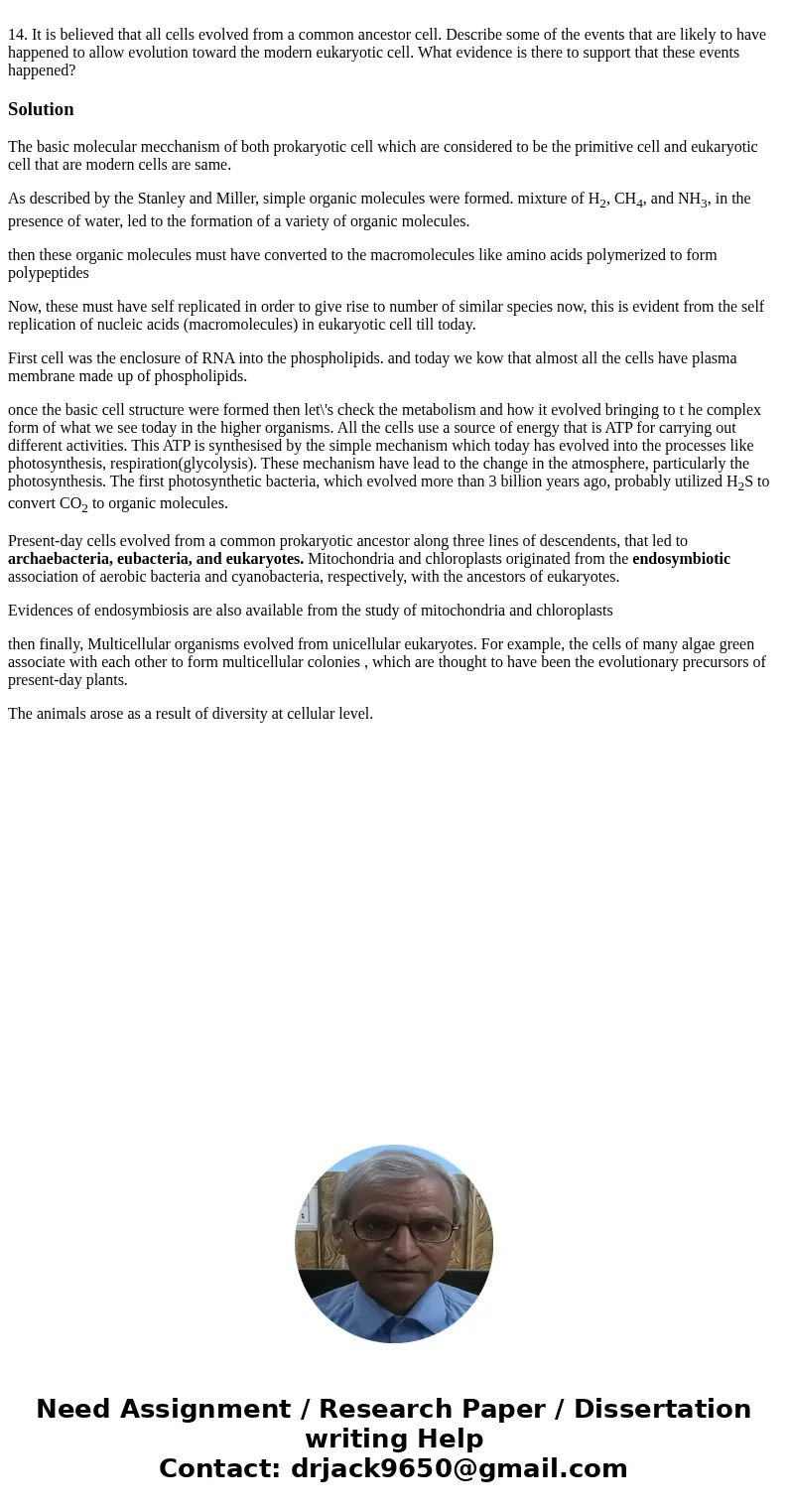14 It is believed that all cells evolved from a common ances
14. It is believed that all cells evolved from a common ancestor cell. Describe some of the events that are likely to have happened to allow evolution toward the modern eukaryotic cell. What evidence is there to support that these events happened?
Solution
The basic molecular mecchanism of both prokaryotic cell which are considered to be the primitive cell and eukaryotic cell that are modern cells are same.
As described by the Stanley and Miller, simple organic molecules were formed. mixture of H2, CH4, and NH3, in the presence of water, led to the formation of a variety of organic molecules.
then these organic molecules must have converted to the macromolecules like amino acids polymerized to form polypeptides
Now, these must have self replicated in order to give rise to number of similar species now, this is evident from the self replication of nucleic acids (macromolecules) in eukaryotic cell till today.
First cell was the enclosure of RNA into the phospholipids. and today we kow that almost all the cells have plasma membrane made up of phospholipids.
once the basic cell structure were formed then let\'s check the metabolism and how it evolved bringing to t he complex form of what we see today in the higher organisms. All the cells use a source of energy that is ATP for carrying out different activities. This ATP is synthesised by the simple mechanism which today has evolved into the processes like photosynthesis, respiration(glycolysis). These mechanism have lead to the change in the atmosphere, particularly the photosynthesis. The first photosynthetic bacteria, which evolved more than 3 billion years ago, probably utilized H2S to convert CO2 to organic molecules.
Present-day cells evolved from a common prokaryotic ancestor along three lines of descendents, that led to archaebacteria, eubacteria, and eukaryotes. Mitochondria and chloroplasts originated from the endosymbiotic association of aerobic bacteria and cyanobacteria, respectively, with the ancestors of eukaryotes.
Evidences of endosymbiosis are also available from the study of mitochondria and chloroplasts
then finally, Multicellular organisms evolved from unicellular eukaryotes. For example, the cells of many algae green associate with each other to form multicellular colonies , which are thought to have been the evolutionary precursors of present-day plants.
The animals arose as a result of diversity at cellular level.

 Homework Sourse
Homework Sourse